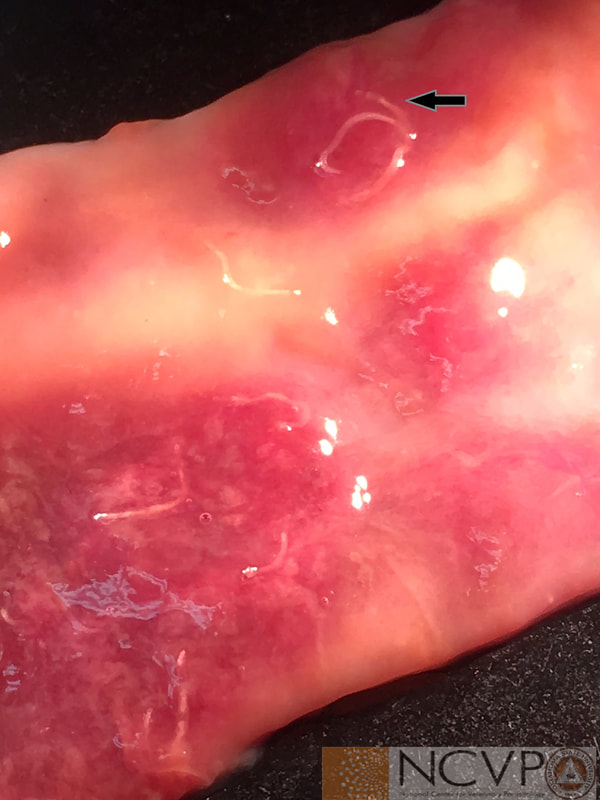Dead horse on pastureA 4-yr-old mare was found dead on a farm in Oklahoma in January 2018. The cause of death was not apparent and the animal was submitted to the state diagnostic laboratory for necropsy. The following organisms were found in the large intestine (indicated by the black arrow, numerous others also present). Many thanks to Megan Wohltjen, Research Technician at OSU-CVHS, for providing this photo from a necropsy case. AnswerUpon gross examination, these organisms are likely small strongyles, or cyathostomes, of which there are numerous species. Active transmission of small strongyles in Oklahoma and other southern states usually occurs during fall through spring months, as the summer season is too hot and dry to facilitate larval development and survival on pasture. Instead, small strongyle larvae will undergo hypobiosis in the mucosal lining of the large intestine during the summer months. Although present at necropsy, infection with these nematodes was likely not the cause of death in this animal, as adult small strongyles are often well-tolerated even in high numbers. If symptoms due to chronic small strongyle infections are present, they are often non-specific but may include weight loss, dull hair coat, loose feces, and colic. The main pathogenesis associated with small strongyle infections in horses is due to the emergence of hypobiotic larvae from the intestinal mucosa. Massive inflammation of the large intestine can occur in horses with high numbers of excysting larvae. The clinical syndrome associated with the inflammation, which is often characterized by profuse diarrhea, weight loss, anemia, hypoprotienemia, ventral edema, and dehydration, is referred to as larval cyathostominosis. Comments are closed.
|
Archives
July 2024
Have feedback on the cases or a special case you would like to share? Please email us ([email protected]). We will appropriately credit all submittors for any cases and photos provided.
|

